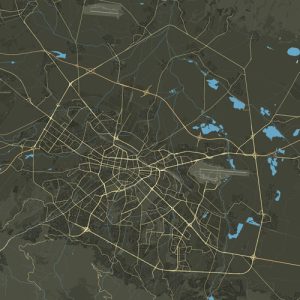After liberation from Ottoman slavery, outraged by the short Bulgarian memory, the patriarch of Bulgarian literature, Ivan Vazov, with sorrow and reverence wrote his famous “Epic of the Forgotten”. ! Eternal glory to your children, to your ashes and to your grave, where the rebellious slave fell bravely!”
There is no Bulgarian who does not feel the power of these verses directly with his heart. Although written a long time ago, they can by no means be called archaic. Because they sing the epic April Uprising – part of the essence of all generations – current and future.
It’s good that there are museums. Like Peruštitsa’s.
Centuries before the arrival of the Romans, around the karst spring near the former hamlet of Pastusha, the Thracians created their own settlement. 29 burial mounds were discovered in this area, among which the most famous are Duhova and TBanova. It is from the first that the objects from the Thracian era are exhibited today in the museum: war chariots, a marble head of a man, statues of ancient deities, votive tablets, as well as coins minted in Philippopolis. People were attracted by the unique conditions of the region – abundant water, fertile fields, the proximity of the mountains, the healthy temperate climate, but also by something else – the beauty of the local nature. It is believed that the current city originates from the ancient settlement of Dragovets, destroyed in 1364 by the Turkish hordes led by Lala Sahin. But their attempts to convert people to Islam were unsuccessful.
In the 15th century, many Bulgarian refugees came here from the westernmost regions of the Balkan Peninsula – today’s Albania and Epirus. The settlement was burned down again in 1794 by Mehmed Sinap’s kurdzhali. But Peruštitsa always rose from the ashes. All these unfortunate events and vicissitudes of fate could not break the local people, because their Bulgarian roots were strong.
During the Renaissance, the most glorious years of Perushtitsa, prominent educators and activists of the national liberation movement lived and worked here, such as Petar Bonev, Spas Ginov, Vasil Sokolski – Doctor and Kocho Chestimenski, immortalized by Vazov in the poem of the same name. In 1869, Vasil Levski founded a secret revolutionary committee in the city, whose activity was resumed by Georgi Benkovski seven years later.
The glorious and tragic days of the April Uprising have come. For seven days, the Persians withstood the incessant attacks of the Bashibozus, who were many times superior in number and armament, led by the Dark Adil Agha. In the Church of Saint Michael the Archangel, they preferred death to the danger of falling into the hands of the five-century enslaver: many men first took the lives of their own wives and children, and then they also committed suicide. 347 people died, but not as slaves, but as freemen. Later their bones were collected and buried in this same church. Peruštitsa was burned and razed to the ground.
The city was liberated from the Ottomans on January 3, 1878. Its Historical Museum is a testimony that none of the worthy sons of Peruštitsa and their deeds will be forgotten.
Work time:
Opening hours:
From 1 June to 30 September
Monday – Friday: 09:30 – 18:00
Saturday – Sunday: 10:00 – 18:00
From 1 October to 31 May
Monday – Friday: 08:30 – 17:00
Saturday – Sunday: 09:00 – 17:00
Peruštitsa Historical Museum does not accept visitors on the following national holidays:
January 1 – New Year’s Day December 24 – Christmas Eve 25 – Christmas Easter – two days that are designated to be celebrated in the respective year
The additional days off for the Peruštitsa Historical Museum are announced in due course on our Facebook page.
Contacts:
Address: Peruštitsa, “Peter Bonev” St. No.1
Tel: +359 3143 2205
To contact the Red Church site: 0877 644 331
Website

